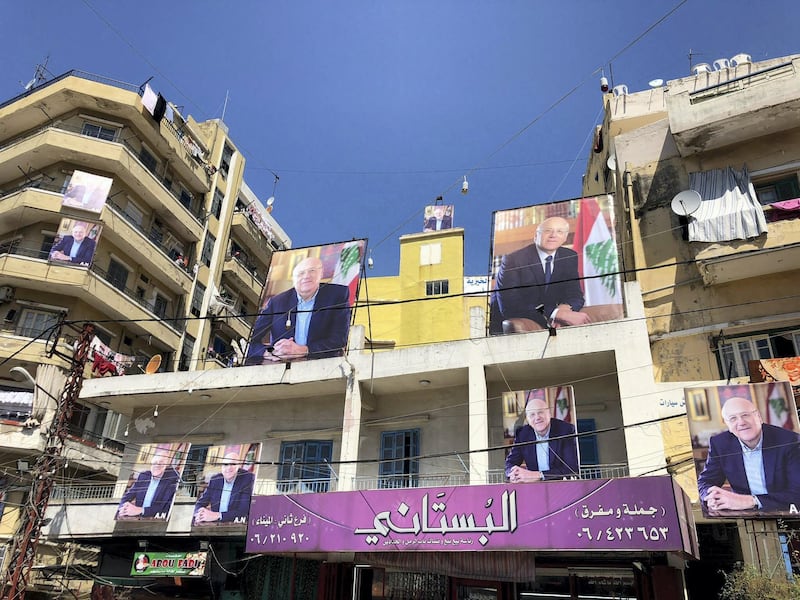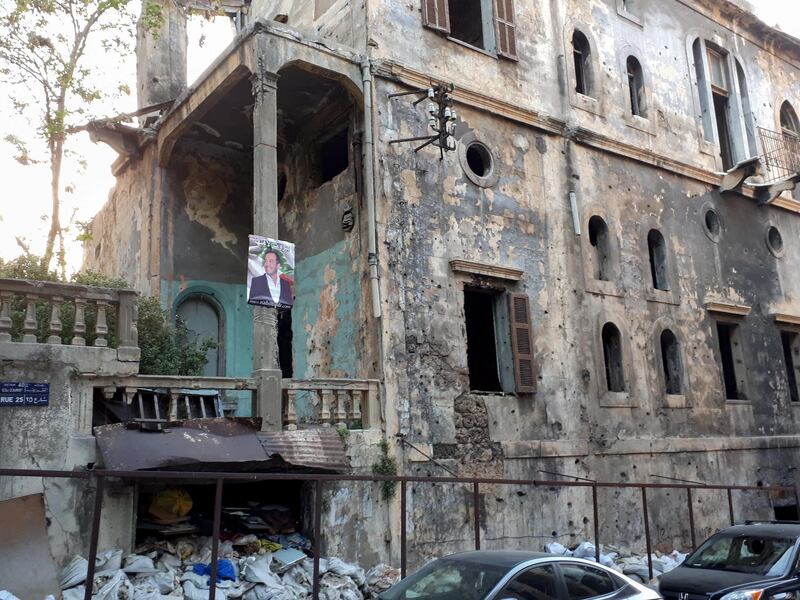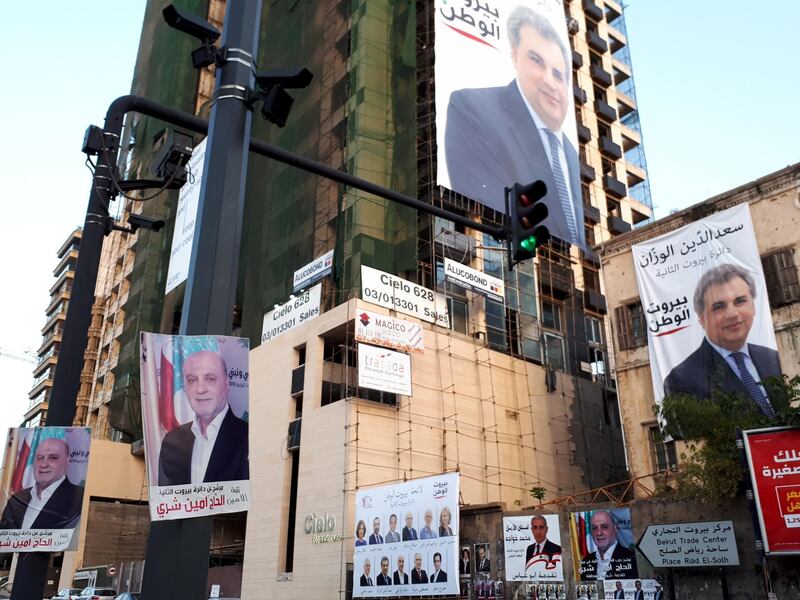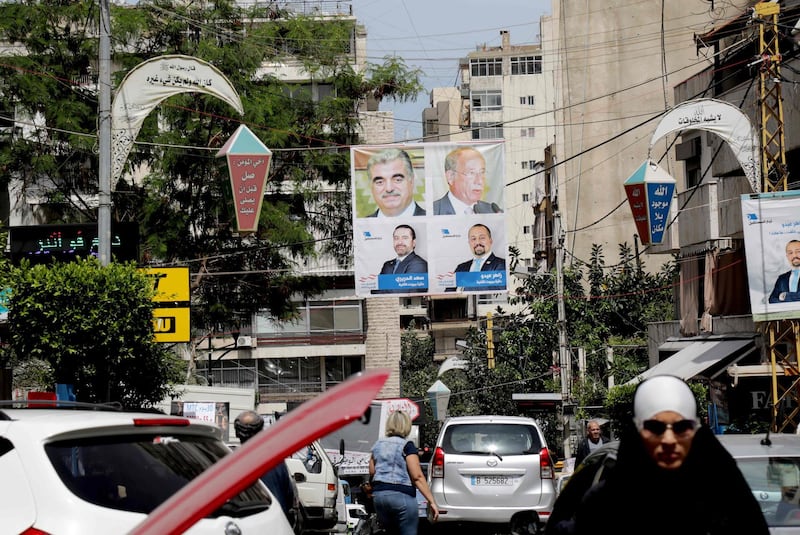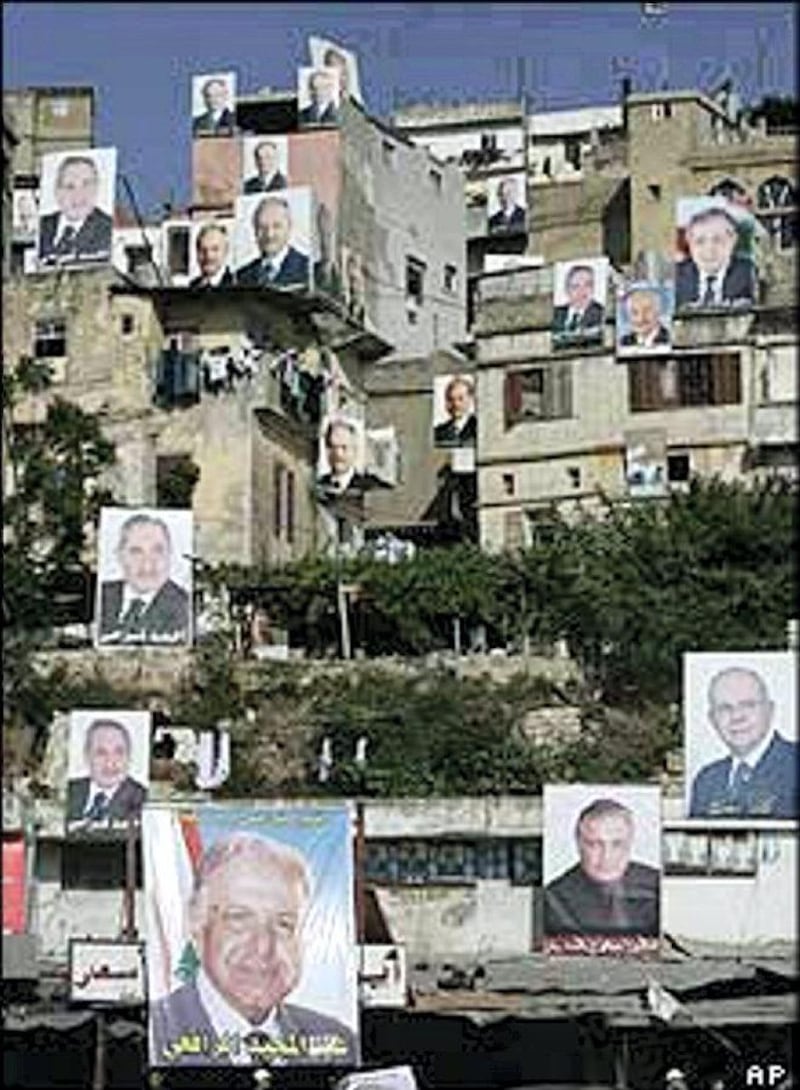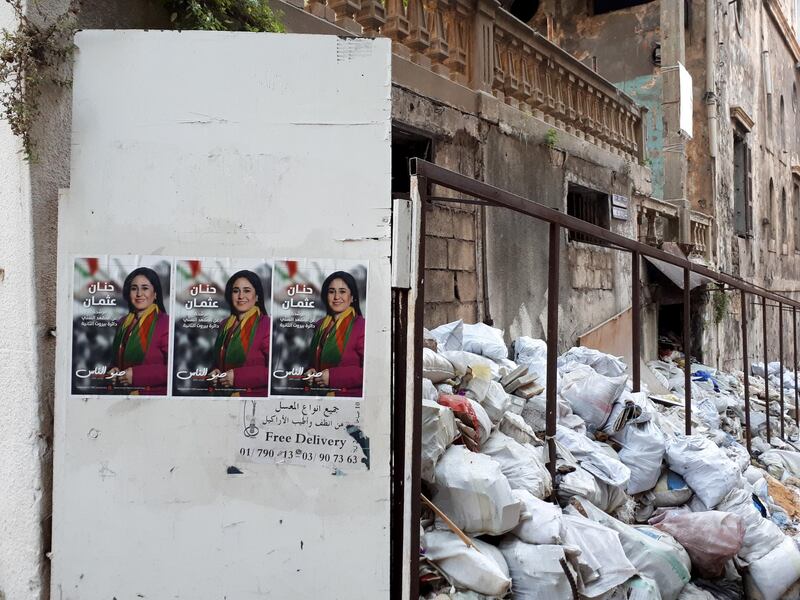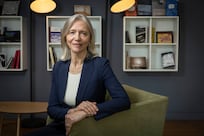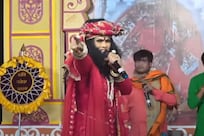In the weeks running up to May 6, the date of the first parliamentary elections to be held in Lebanon for nine years, walls, billboards and the sides of buildings all over the country have become foot-soldiers in a silent battle.
Election posters are affixed to private balconies, the walls of derelict buildings, the sides of bridges and the facades of skyscrapers still under construction, some towering up to 10 storeys high. Posters are prominently displayed at major urban intersections and along the coastal highway, where people from across the country are likely to see them, reflecting the fact that Lebanese citizens are required to vote in the district where their birth was registered, rather than where they live. “If you’re a candidate you put your posters where you are running but also where your voters are potentially living,” says Ammar Abboud, a political scientist and co-founder of the Lebanese Association for Democratic Elections.
The Cain and Abel law
Although at first sight most of these posters are unremarkable – and occasionally unintentionally comic – collectively they provide insight into the nuances of an election complicated by a convoluted new law and characterised by unlikely alliances between parties and candidates determined to exploit the system.
Most election posters feature a headshot of the candidate standing for office, accompanied by a name, a small logo denoting the candidate's party or list, and occasionally a simple campaign slogan. Little attention has seemingly been given to design or originality, beyond the colour palettes that candidates use to associate themselves with a particular party.
The prevalence of individual posters is a departure and reflects the new electoral law. Combining proportional representation with Lebanon's complex religious system, whereby a certain number of seats are allotted to each sect, the new law means that voters will be asked to vote not only for a list consisting of an alliance of candidates from different sects and parties, but also to express a preference for one candidate on their chosen list.
In Arabic, voters have started referring to the new system as “the Cain and Abel law”, says Lokman Slim, an activist, political commentator and the founder of Hayya Bina, an organisation set up during the 2005 elections to promote citizen involvement in politics. This reference to the biblical fratricide reflects the way the preferential vote pits candidates on the same list against each other. The prevalence of individual posters is “a literal reflection of the electoral law with its preferential vote”, he says.
Some of the independent candidates who have banded together to form lists in an alliance known as the Tahalouf Watani (National Coalition), however, are bucking the trend.
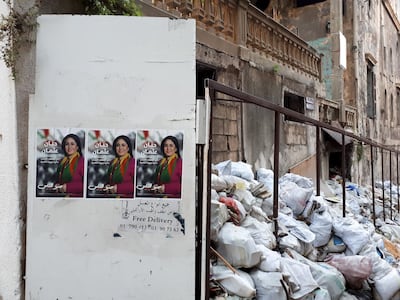
Many of them are part of a civil society movement that grew out of the anti-government protests held amid the rubbish crisis in 2015 and have based their platforms on a series of liberal reforms, including human rights and environmental improvements.
Muscle flexing
In the Beirut I district, comprising the Christian east of the city, the Kollouna Watani (We Are All National) list, made up of candidates linked to civil society groups including You Stink, LiBaladi and the Sabaa Party, is one of the few to have produced collective posters, capturing the candidates standing shoulder to shoulder in a show of solidarity. Some of the candidates, such as television presenter Paula Yacoubian, running with the Sabaa Party, have also produced individual posters targeting the preferential vote. By contrast, politicians associated with entrenched political dynasties are focusing on self-promotion. In the Beirut neighbourhood of Tariq Al Jadideh, a Sunni stronghold in the Beirut II district, portraits of Prime Minister and leader of the Future Movement Saad Hariri stare down from buildings and bridges. On the motorway heading south, posters of Parliament Speaker and head of the Amal Movement Nabih Berri are displayed near election posters for Russian President Vladimir Putin, whose troops have been fighting alongside Hezbollah in Syria.
Posters aggrandising leaders fall into a long tradition stretching back before war time, according to academic Zeina Maasri. In her 2009 book, Off the Wall: Political Posters of the Lebanese Civil War, she tells how the Arab tradition of the za'im, or leader, is part of a historical model whereby political allegiance is linked more to individuals than to organisations.
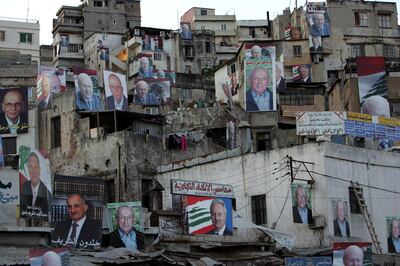
This is evidenced in the election posters that play on family dynasties. Many of Saad Hariri’s posters include a portrait of his father, former prime minister Rafik Hariri, who was assassinated in 2005. A controversial banner in Beirut’s Ashrafieh district, meanwhile, features a portrait of Bashir Gemayel, a Lebanese Forces leader during the civil war who was assassinated in 1982, alongside his famous speech calling for Syrians to leave Lebanon. Originally made in reference to the Syrian occupation, it resonates very differently amid the current refugee crisis. Portraits of his son, Nadim Gemayel, the incumbent Kataeb party candidate in Beirut, cover walls all over the east of the city. Maasri describes political posters as “symbolic sites of struggle” – a tool used to legitimise political messages and lay claim to certain neighbourhoods. “It is a form of marking territory spatially – on the street, in public spaces,” she says.
Slim agrees that election posters are a way of asserting power and dominance. “When you have these huge posters in large quantities, it’s a kind of muscle flexing, more than anything else,” he says, adding that they tend to be more prominent in districts where the outcome is uncertain. “It’s where the demarcation lines are deep or when you need to encourage voters to go to the polling station.”
In the run-up to Sunday’s election, campaign posters have been torn down and burned and have even led to physical confrontation.
Popularity contest or battle of ideologies?
On April 22, Ali Al Amin, an independent Shiite candidate running against a Hezbollah-Amal alliance in south Lebanon was putting up campaign posters in his village when he was beaten by a group of Hezbollah supporters and ended up in hospital. Later the same day, supporters of rival Druze parties were involved in an altercation over electoral posters in Choueifat, south of Beirut. Machine-guns were fired into the air before the army arrived to break up the confrontation.
__________
[ Why Hezbollah will be paying close attention to Sunday's elections in Lebanon ]
__________
“The culture of posters by political parties – especially armed political parties – doesn’t permit any alternative or any dissent being expressed. Any poster that is not theirs is an affront to them,” says Abboud. “In other areas, where the dominant faction is not that dominant, there is more of a balance. You tend to see various posters, which could sit side by side.”
The incidences of violence reveal the tensions bubbling beneath what – on the surface – is an unusually bland visual campaign, more of a popularity contest than a battle of ideologies. In the absence of the clear political divide that characterised the last two elections, parties have formed diverse alliances of convenience in different districts, making it difficult for candidates to criticise other parties or to express strong opinions about the election’s contentious issues.
A new discourse
“I made an effort to look [to see] if any of the candidates, be they individuals or parties, talked about the refugee issue. This is totally absent,” says Slim. “Regarding the arms of Hezbollah, it’s almost absent… People are less interested in big issues and much more interested in day-to-day issues.
“I would say that the political discourse is becoming more and more casual. It’s departing from the formal language… to messages which are much easier to be seized by the public, and sometimes they try to be funny… They are no longer talking about blood, about truth, about justice – all these concepts which were used in 2005 and a bit in 2009.”
At the same time, the growth of the civil society movement has influenced the campaigns of entrenched politicians and parties. "Everyone is taking ownership of the slogans that the so-called civil society promoted in 2015," says Slim. "For example, the main slogan, 'We need to fight corruption'. This wasn't part of the Lebanese discourse… What's interesting is that politicians are appropriating the slogans of those who should be their foes, and I think this is the evil genius of the Lebanese politicians, that they can turn things upside down."
The gender imbalance in visual campaigning
An analysis of election posters is also revealing when it comes to the role of female candidates. A total of 86 women are standing for election this year, alongside 511 men, a significant increase on the 2009 elections, which featured 12 female candidates.
The dominance in the number and scale of election posters featuring male candidates, however, supports Abboud’s theory that many established parties are fielding female candidates as a token gesture, while intending male candidates to win the available seats.
“Unfortunately, the increase in women’s candidacy is not an indication of the decrease in macho behaviour in the political system,” he says. “Actually, it’s an indication of a big increase in the macho culture, because in their minds – ‘We’ll put women in the list because they are less of a competitor pertaining to the preferential vote than men… It’s good for a poster and she doesn’t represent a danger to me later on when we are competing for the preferential vote.’”
The imbalance in visual campaigning may also be symptomatic of the disparity in funding available to established male politicians – many of whom are millionaires in their own right – and first-time female and independent candidates, some of whom have resorted to crowdfunding to raise money for poster campaigns and work on social media outreach. “The new law does not place adequate limits on campaign spending, skewing the balance in favour of traditional political parties and leaders with greater resources,” says Mona Khneisser, a researcher at the American University of Beirut’s Issam Fares Institute for Public Policy and International Affairs.
__________
More on the election from The National's foreign editor Arthur MacMillan in Beirut:
[ In Lebanon, women vote but few are chosen ]
[ Lebanon paves way to election as regional tension soars ]
__________
Slim estimates that the total amount spent on campaigning exceeds $700 million [Dh2.6bn]. Wandering the streets of Beirut, where enormous posters bearing the smiling faces of candidates hang from walls riddled with bullet holes on buildings that have stood derelict since the civil war, the irony of this kind of expenditure in a country with struggling infrastructure and debts of almost $80 billion is hard to miss. No wonder so many of these slogans on billboards around the city evoke the same keywords: loyalty, corruption, change.
